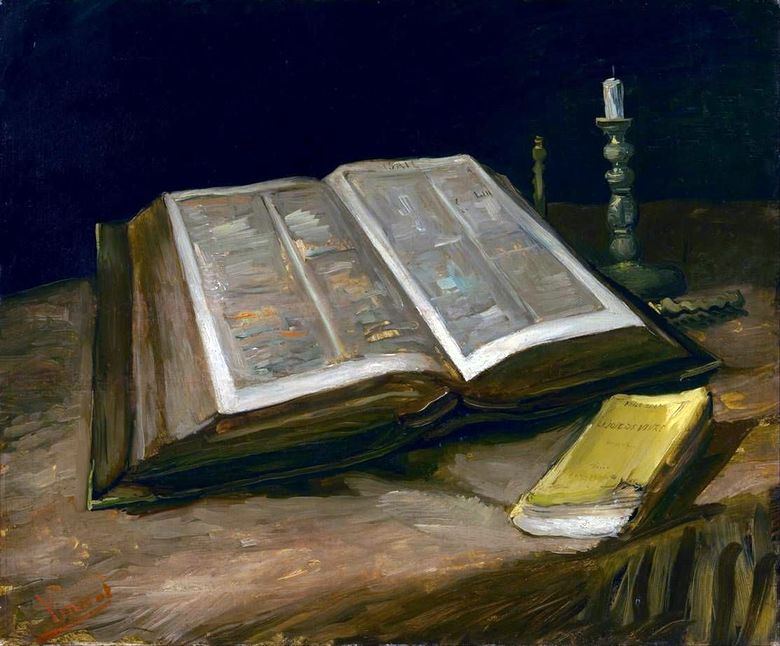
This still life is one of the most atypical paintings of Van Gogh. It was written in October 1885. There is a suggestion that the picture was created after visiting the State Museum in Amsterdam, where the young artist made a great impression of the work of Rembrandt van Rijn and Frans Hals. The influence of the painting of these masters can be clearly seen in this picture, in particular its color structure, composition and energetic, wide manner of writing.
In the painting, Van Gogh depicted the Bible, and next to it – a small book with the novel by the French writer Emile Zola. The Bible once belonged to the artist’s father, who was a priest. Her pages are contrasted and clearly stand out against a dark background. The Bible looks thoroughly and almost monumentally, occupying most of the canvas. Perhaps this is how Van Gogh tried to emphasize the solidity and unchanging faith, as well as its importance for the father and for himself.
The Bible completely absorbs the viewer’s attention, and therefore a small book is not noticed right away. The artist depicts her soft, worn out cover of her favorite yellow color. Emil Zola was one of the most respected writers. Van Gogh very much appreciated modern French literature, considering it a kind of bible of life.
In contrast between the two books, Van Gogh expressed the difference between his father’s views and his worldview. But, having constructed a composition in such a way as to make Zola’s book almost invisible, he showed his respect for faith.
 Nature morte de la Bible – Vincent Van Gogh
Nature morte de la Bible – Vincent Van Gogh Still Life: French Novels by Vincent Van Gogh
Still Life: French Novels by Vincent Van Gogh Still life: vase with oleanders and books by Vincent Van Gogh
Still life: vase with oleanders and books by Vincent Van Gogh Still life with a plaster figurine, a rose and two novels by Vincent Van Gogh
Still life with a plaster figurine, a rose and two novels by Vincent Van Gogh Still life with mussels and shrimps by Vincent Van Gogh
Still life with mussels and shrimps by Vincent Van Gogh Still life: pink roses by Vincent Van Gogh
Still life: pink roses by Vincent Van Gogh Still life with a bow and a drawing board by Vincent Van Gogh
Still life with a bow and a drawing board by Vincent Van Gogh Still Life: Fifteen Sunflowers in a Vase by Vincent Van Gogh
Still Life: Fifteen Sunflowers in a Vase by Vincent Van Gogh